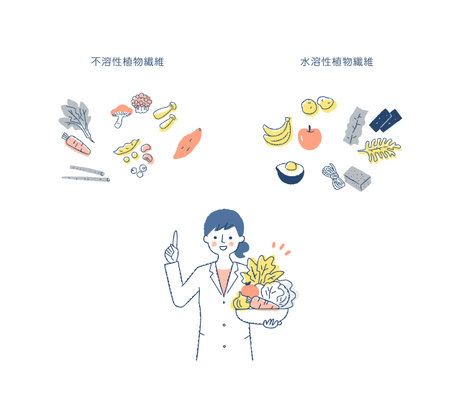Understanding Acne: Causes and Myths
Acne is one of the most common skin concerns in the United States, especially among teens and young adults. But despite how widespread it is, there are still a lot of myths floating around about what really causes acne—and how your daily diet might play a role. Let’s break down what acne actually is, clear up some common misconceptions, and talk about the real factors that can lead to breakouts.
What Is Acne?
Acne happens when hair follicles under your skin get clogged with oil (sebum) and dead skin cells. This can lead to whiteheads, blackheads, pimples, or even deeper cysts. While acne usually shows up on the face, it’s also common on the back, chest, and shoulders.
Main Causes of Acne
| Cause | Description |
|---|---|
| Hormonal Changes | Fluctuations during puberty, menstruation, pregnancy, or stress can boost oil production and trigger breakouts. |
| Genetics | If your parents had acne, you’re more likely to experience it as well. |
| Environmental Factors | Pollution, humidity, and certain skincare products can clog pores or irritate skin. |
| Diet (Emerging Evidence) | New research suggests that some foods may influence breakouts for certain people. |
Common Myths About Acne
- Myth: Eating greasy foods like pizza directly causes acne.
Fact: Greasy foods don’t automatically mean greasy skin. However, what you eat can impact your hormones and inflammation levels. - Myth: Only teenagers get acne.
Fact: Adults can struggle with breakouts too—sometimes well into their 30s and 40s. - Myth: Poor hygiene is to blame.
Fact: Washing your face too often or too harshly can actually make acne worse by irritating your skin.
The Role of Diet: Why It Matters
Lately, more dermatologists are recognizing that diet may play a part in who gets acne and how severe it becomes. While food isn’t the only cause, understanding which foods could help or hurt your skin is an important step in managing breakouts—especially if you’ve already tried other methods without success.
2. The Link Between Diet and Acne
Many people wonder if what they eat can actually affect their skin, especially when it comes to acne. In recent years, scientists have taken a closer look at how diet might play a role in breakouts. While genetics, hormones, and skincare habits are all important factors, research shows that certain foods could make acne worse for some people.
How Food Influences Acne
When we eat, our bodies react differently to various types of foods. Some foods can cause our blood sugar to rise quickly, leading to a spike in insulin. Higher insulin levels can increase oil production in the skin and make it easier for pores to get clogged—two big contributors to acne. On the other hand, some foods help calm inflammation or support healthy skin.
What Does the Science Say?
Studies in the U.S. and around the world suggest there’s no single “acne-causing” food for everyone. Instead, researchers have found patterns that link some foods with more frequent breakouts in certain individuals. Here’s a simple breakdown:
| Food Group | Potential Effect on Acne |
|---|---|
| High Glycemic Foods (white bread, sugary snacks, soda) | May trigger breakouts by increasing insulin and oil production |
| Dairy Products (milk, cheese, ice cream) | Some studies link dairy with acne, possibly due to hormones in milk |
| Omega-3 Rich Foods (salmon, walnuts, chia seeds) | Can help reduce inflammation and may improve acne for some people |
| Fruits & Vegetables | Packed with vitamins and antioxidants that support healthy skin |
| Processed Foods (fast food, chips) | Might worsen acne because of high fat and sugar content |
Why Do Some People Break Out From Certain Foods?
The answer is: everyone’s body is different! Some people might notice more pimples after eating pizza or ice cream, while others don’t see any change. Factors like genetics, hormone levels, stress, and even sleep can influence how your skin responds to what you eat.
If you’re struggling with breakouts, paying attention to your diet could be helpful. Keeping a simple food diary can help you spot patterns between what you eat and your skin’s reaction.
![]()
3. Foods That May Worsen Acne
Many people wonder if what they eat can really impact their skin, especially when it comes to acne. While everyone’s body is different, research and experience suggest that certain foods common in the American diet may contribute to breakouts. Here’s a closer look at some of the top culprits:
High-Glycemic Foods
High-glycemic foods cause your blood sugar to spike quickly. This can lead to increased oil production and inflammation, both of which can make acne worse. Common high-glycemic foods include:
| Food Type | Examples |
|---|---|
| Sugary Snacks | Doughnuts, candy bars, cookies |
| Refined Grains | White bread, white rice, bagels |
| Sugary Drinks | Soda, sweetened iced tea, sports drinks |
Dairy Products
Dairy—especially skim milk—has been linked to more frequent acne breakouts in some studies. The exact reason isn’t clear, but hormones and bioactive molecules found in milk might play a role. Common sources of dairy in American diets include:
- Milk (especially skim milk)
- Cheese (cheddar, mozzarella, American)
- Ice cream and frozen yogurt
- Cream-based dressings and sauces
Processed Snacks and Junk Food
Fast food and processed snacks are everywhere in the U.S., but these foods are often high in unhealthy fats, sugars, and additives that may trigger or worsen acne. Examples include:
- Potato chips and corn chips
- French fries and onion rings
- Packaged snack cakes and pastries
- Frozen pizzas and microwaveable meals
A Quick Comparison Table: Acne-Triggering Foods in the American Diet
| Category | Common Examples in the U.S. |
|---|---|
| High-Glycemic Foods | Soda, white bread, sweet cereals |
| Dairy Products | Milk, cheese, ice cream |
| Processed Snacks & Fast Food | Burgers, fries, packaged snacks |
Why Do These Foods Matter?
If you notice more pimples after eating these types of foods, you’re not alone. While cutting them out completely isn’t always realistic or necessary, being mindful about how much and how often you consume them could help improve your skin over time.
4. Acne-Friendly Foods to Include
If youre looking to support clearer skin, paying attention to what you eat can make a difference. Certain foods are packed with nutrients that help reduce inflammation and promote healthy skin. Here are some acne-friendly options to include in your daily meals:
Fresh Fruits and Vegetables
Colorful fruits and vegetables are rich in antioxidants, vitamins, and minerals. These nutrients help fight inflammation and protect your skin from damage. Try adding more of these options to your diet:
| Fruits | Vegetables |
|---|---|
| Berries (strawberries, blueberries) | Spinach |
| Oranges | Kale |
| Apples | Carrots |
| Avocados | Sweet potatoes |
| Mangoes | Broccoli |
Whole Grains Over Refined Carbs
Whole grains have more fiber and nutrients than processed grains. Fiber helps balance blood sugar levels, which can be important for managing acne. Try swapping out white bread or pasta for these whole grain choices:
- Brown rice
- Quinoa
- Oats
- Whole wheat bread or pasta
- Bulgur wheat
Healthy Fats for Glowing Skin
Certain fats are actually good for your skin! Healthy fats help keep your skin hydrated and can reduce inflammation linked to acne. Add these healthy fat sources to your meals:
| Source of Healthy Fats | Nutrient Highlighted |
|---|---|
| Avocados | Vitamin E, monounsaturated fats |
| Nuts (almonds, walnuts) | Omega-3 fatty acids, vitamin E |
| Seeds (chia, flaxseed) | Omega-3 fatty acids, fiber |
| Fatty fish (salmon, sardines) | Omega-3 fatty acids, protein |
| Olive oil | Monounsaturated fats, antioxidants |
Tips for Adding Acne-Friendly Foods to Your Diet
- Add berries or sliced apple to your morning oatmeal.
- Toss spinach and avocado into salads or smoothies.
- Snack on nuts instead of chips.
- Choose brown rice or quinoa instead of white rice.
- Aim for at least two servings of fatty fish per week.
5. Practical Tips for an Acne-Conscious Diet
Easy Ways to Make Healthier Choices at Home
Eating for healthier skin doesn’t have to mean a complete diet overhaul. Small, realistic changes can make a big difference. Here are some simple tips you can try at home:
- Plan Balanced Meals: Fill half your plate with colorful veggies and fruits, one quarter with lean protein like chicken or beans, and the last quarter with whole grains.
- Snack Smart: Swap chips and candy for nuts, yogurt, fresh fruit, or veggie sticks with hummus.
- Read Labels: Check food labels for added sugars and unhealthy fats—aim for foods with fewer ingredients and less sugar.
- Cook More at Home: Homemade meals give you control over what goes into your food and let you avoid hidden triggers like excess dairy or greasy oils.
Quick Guide: Foods to Enjoy & Foods to Limit
| Foods to Eat More Of | Foods to Eat Less Of |
|---|---|
| Berries, leafy greens, sweet potatoes | Sugary snacks (cookies, sodas) |
| Whole grain bread, brown rice, quinoa | White bread, pastries, sugary cereals |
| Nuts, seeds, fatty fish (salmon) | Fried foods, fast food burgers, chips |
| Lentils, beans, lean meats | Processed meats (bacon, sausage) |
| Unsweetened almond or oat milk | Whole milk and high-fat dairy products |
Smart Choices When Eating Out
Dine out without stressing over your skin by keeping these tips in mind:
- Customize Your Order: Ask for dressings and sauces on the side so you can control how much you eat.
- Pick Grilled Instead of Fried: Choose grilled chicken or fish instead of fried menu items.
- Add Veggies: Request extra vegetables in sandwiches, salads, or as a side dish.
- Select Water or Unsweetened Drinks: Skip sugary sodas and opt for water or unsweetened iced tea instead.
- Watch Portion Sizes: Consider sharing large entrees or boxing up half your meal for later.
Coffee Shop & Fast Food Swaps
| If You Usually Order… | Try This Instead! |
|---|---|
| Sugary frappuccino with whipped cream | Iced coffee with skim milk or plant milk, no added syrup |
| Burger with fries and soda | Grilled chicken sandwich with side salad and water |
| Creamy pasta dishes | Pasta primavera with tomato sauce and extra veggies |
| Muffin or donut breakfast | Oatmeal topped with berries and nuts |
| Dessert parfaits loaded with cream and sugar | Fresh fruit cup or low-sugar Greek yogurt parfait |
The Bottom Line: Balance & Moderation Matter Most!
You don’t need to cut out every “bad” food—just aim to balance your plate most of the time. By focusing on whole foods and making mindful choices whether at home or eating out, you’ll set yourself up for better skin without feeling deprived. The key is progress over perfection!


